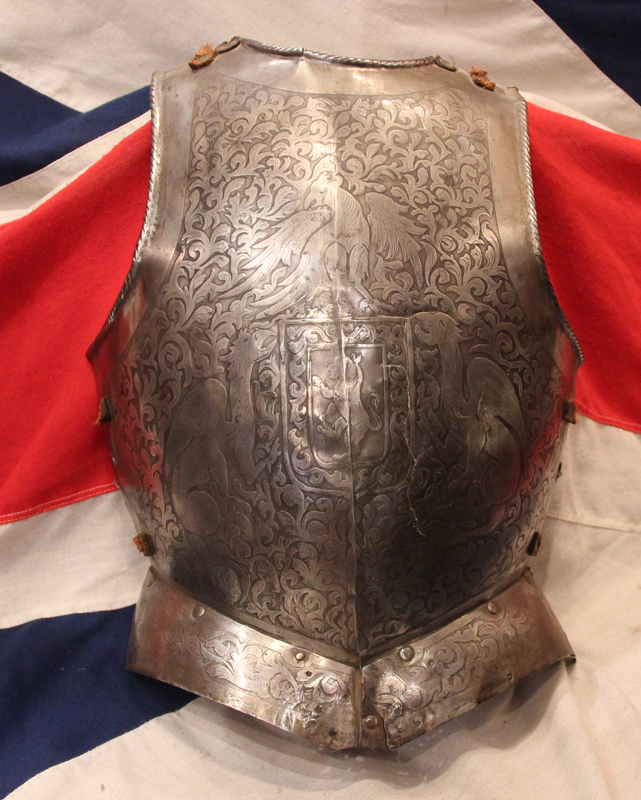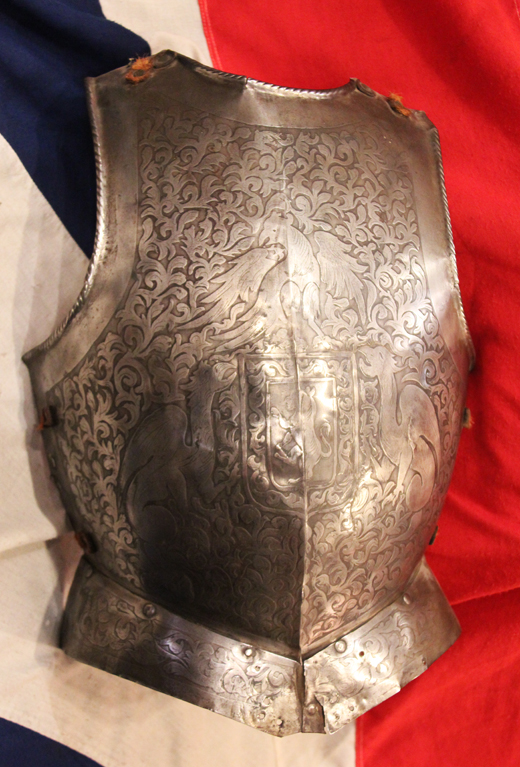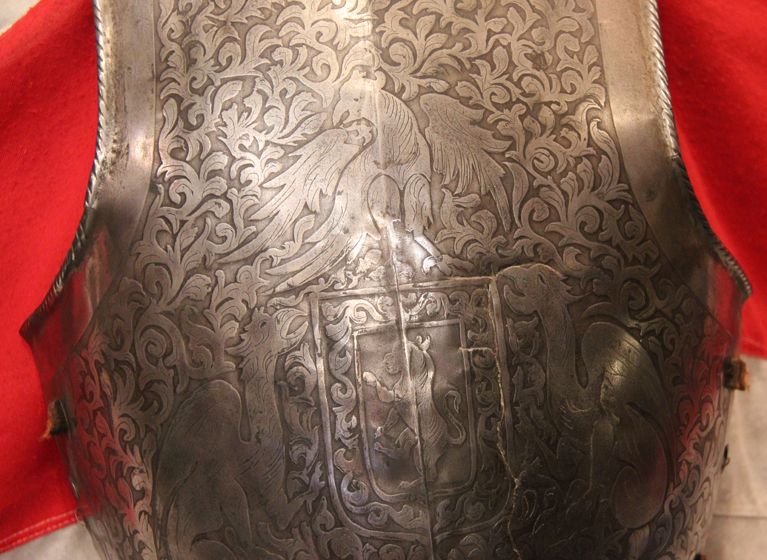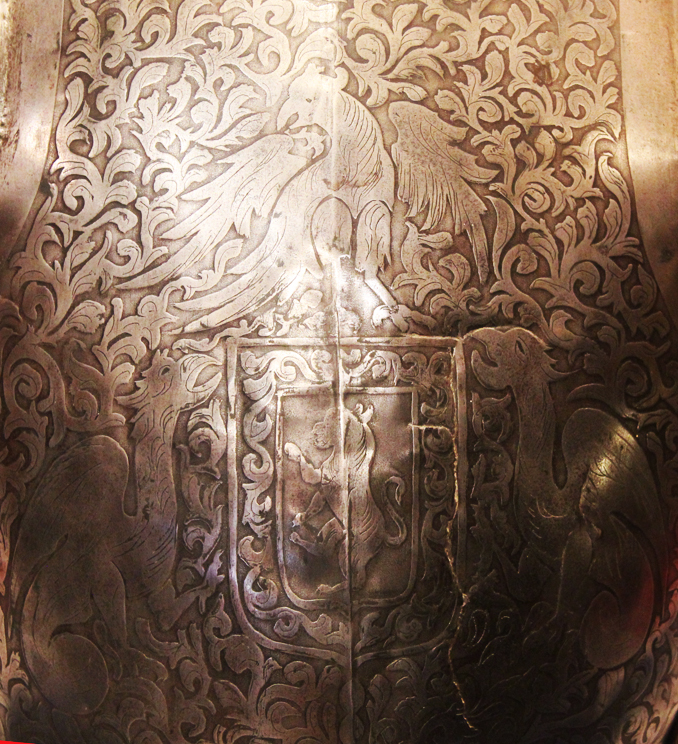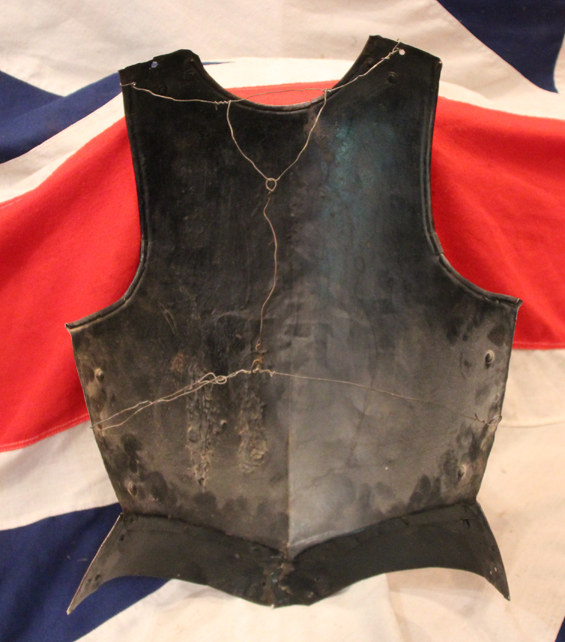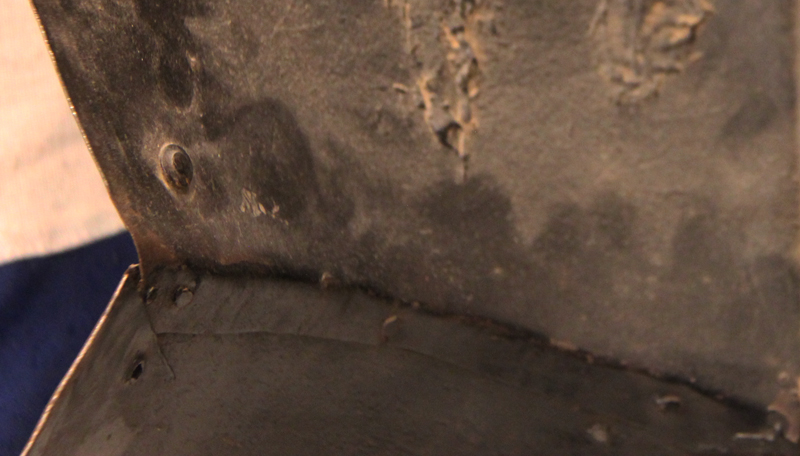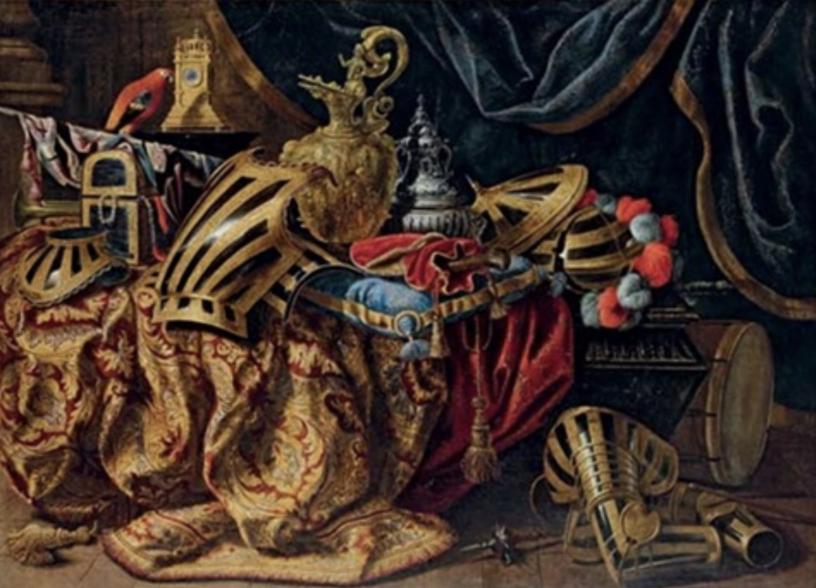A Superb Antique Historismus Armour Breastplate Stunningly Etched With Heraldic Beasts, The Form of Armour Worn by Conquistadors Officers and Commanders.
A beautiful piece of chest parade armour, with an etched crest of nobility comprising three winged Griffins and a central Lion rampant within a shield. The Griffin (or Gryphon) is a legendary creature with the body of a lion and the head and wings of an eagle. Combining the attributes of the "King of the Beasts" and the "King of the Air", it was thought to be especially powerful and majestic. A light armour breastplate, 16th century style in the manner of the 1550's, with old restoration, 19th century and earlier.
Parade armour became an elaborate and ornate Renaissance art form intended to both glorify war, and flatter the military prowess of the royal subject. Surviving examples include decorated shields, helmets, and full suits of armour. Delaune was an important contributor to the form, and Henry II of France commissioned a number of similar works, including a panel for his horse, and some bucklers (shields) now in the Louvre, both by Delaune. In addition surviving works for Henry include a full suit at the Museum of Ethnology, Last picture in the gallery is a painting by
Madeleine Boulogne (French, 1648–1710)
Titled;
Pieces of parade armour, a plumed helmet, a pistol in a case, a gilt ewer, a silver perfume burner, a jewellery box, a trumpet and a flag on a partly-draped cassone. 18.5 inches x 14.5 inches
Code: 21569
1650.00 GBP

